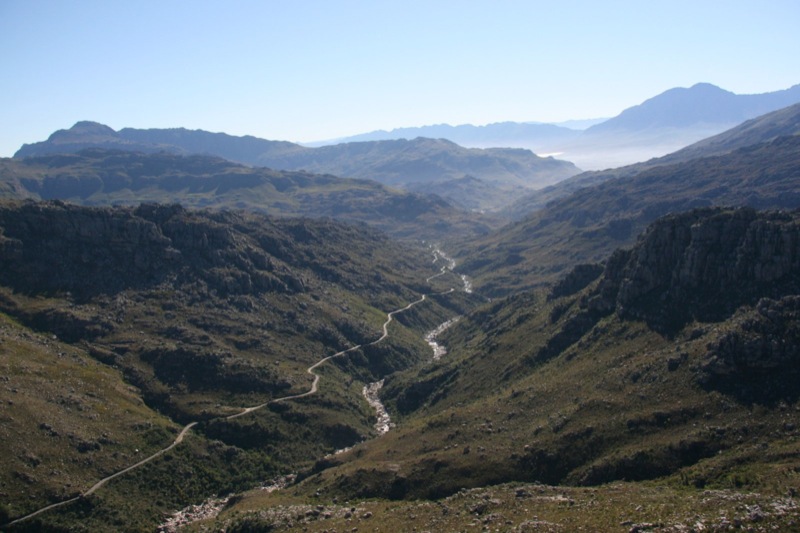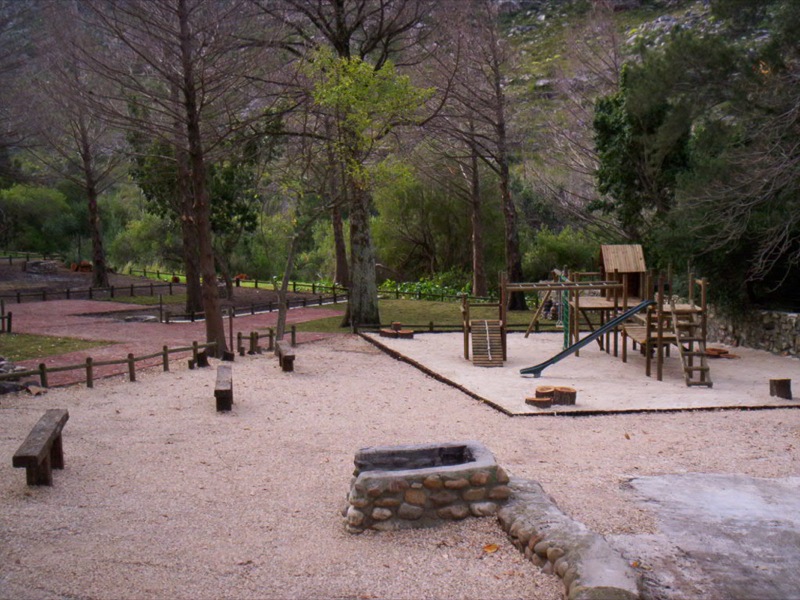To the north of the old Cape Colony were some scattered farmers and not a lot else… besides the mountain range they called the ‘Limietberg’ (meaning ‘boundary mountain’ or ‘the mountain that limits’). There is a small question mark about the name of this range however, as many people did in fact not see the mountains as a limit, and merely walked or rode or took a wagon over the mountain.
Today the mountain still dominates, although people have now burrowed a hole right through it, and come and go daily. Limietberg Nature Reserve lies in the Du Toitskloof mountains near Paarl, forming a part of the greater Boland mountain range. The reserve stretches from Franschhoek in the south, eastwards towards Groot Drakenstein, and northwards as far as Voëlvlei Dam, covering an area of some 117 000ha. The terrain is rugged, with steep kloofs and deep valleys. Du Toits Peak at 1996m is the highest point within the reserve. Limietberg is an important water catchment for the Breede and Berg rivers that flow through the reserve, and feed the Wemmershoek, Stettynskloof, Theewaterskloof and Voëlvlei dams.
The weather conditions in these mountains vary from very hot and dry in the summer months, to extremely cold and wet during the winter, with snow on the higher peaks. Hikers are cautioned to heed weather reports, as many have been caught out by dangerous and often unpredictable conditions. The mountainous terrain makes rescue operations very difficult! The vegetation is predominantly mountain fynbos with remnants of indigenous forest in some of the wetter kloofs. Various mammals occur, including dassie, klipspringer, baboon and the occasional caracal and leopard.
Two endemic birds, the Cape sugarbird and the protea canary, as well as black eagle and various other raptors may be sighted. Three endemic and increasingly threatened fish species occur in the Berg and Breede river systems. Trout (an exotic species) were introduced prior to the establishment of the reserve, and occur in most of the rivers and streams.
A number of interesting historical features may be seen while hiking in the reserve. These include Bushman paintings, a disused manganese mine, the original toll road from Franschhoek to Villiersdorp known as Catspad, and a cross erected by Italian prisoners of war. In the Bainskloof Pass, graves can be seen of convicts who helped to build the road, while there was an old prison at the Tweede Tol Campsite.
The Tweede Tol campsite/caravan park of 25 mostly shady sites is in Bainskloof Pass. There are ablution facilities with hot showers, as well as a day picnic site that can accommodate up to 120 people. Short, enjoyable hikes with stunning views are available to both the camper and day visitor, as are clear rock pools to cool off in on hot days. Peace and tranquillity, especially during the week or outside of school holidays, is a certainty.
There are a number of hikes to choose from in the Limietberg, with names such as Kromrivier, Elandspad, Rockhopper, Bobbejaans, Happy Valley and Miaspoort, but probably one of the nicest is the Limietberg Trail itself, a two-day trek across the mountain (hikers need to leave a vehicle at Tweede Tol in Bainskloof at the end of the trail because the trail starts at the reserve offices at Hawequas, 31km away).
Fishing and rock climbing:
Fly-fishing enthusiasts should know that a number of cold, clear rivers coming out of the Limietberg are a home from home to trout. The Cape Piscatorial Society manages these rivers on behalf of CapeNature. Bookings for the Witte River (Bainskloof), Elandspad, Molenaars, Smalblaar (Du Toitskloof) and the Holsloot (Stettynskloof) can be made through the society at +27 21 424 7725. A freshwater angling licence is required. Casual fishing is allowed at Tweede Tol, but a freshwater angling licence is required and is available at the reception office.
The sport is controlled by the Mountain Club of South Africa and only club members or organised groups can climb in the Limietberg. The club may be contacted at +27 21 465 3412.



